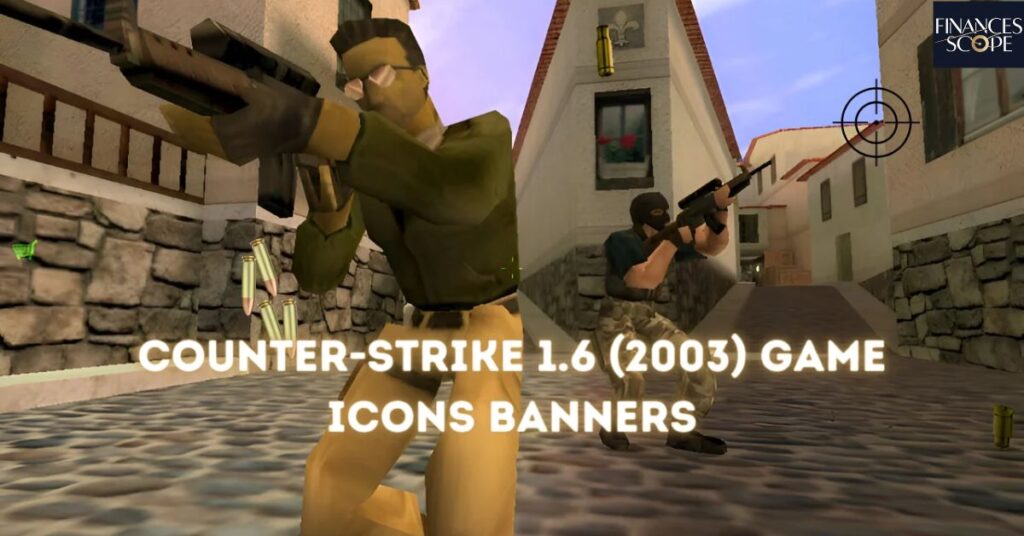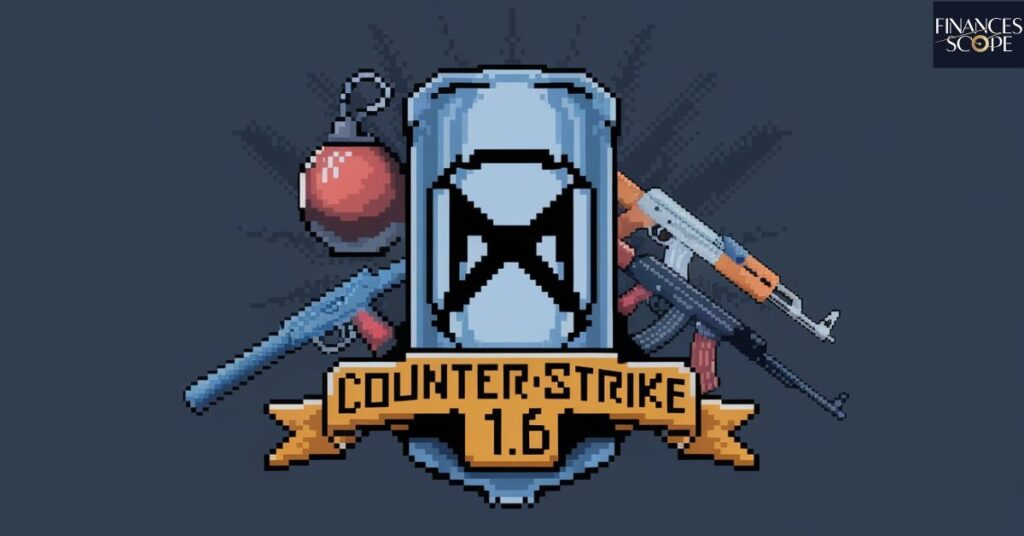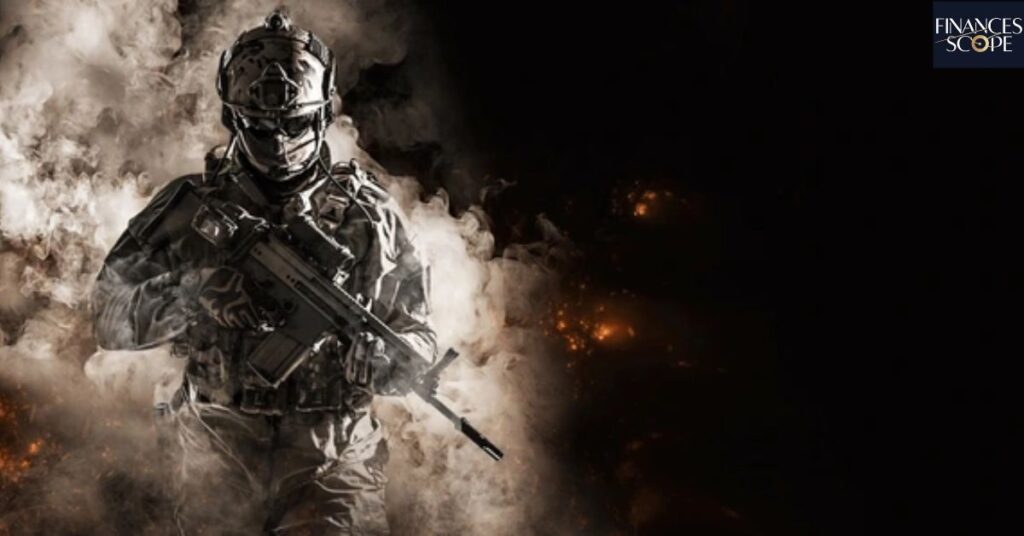Counter-Strike 1.6 (2003) Game Icons Banners have had a legendary impact on the gaming world, influencing visual aesthetics and community identity in the game.
Want to explore how these iconic designs shaped the gaming culture? Dive into the rich history and significance of Counter-Strike 1.6 game icons and banners.
The banners and icons in Counter-Strike 1.6 became symbols of identity for players and teams. They not only enhanced the game’s visual appeal but also contributed to the esports scene, creating lasting memories for long-time fans.
Game Icons In Counter-Strike 1.6 (2003) Game Icons Banners
The game icons in Counter-Strike 1.6 became instantly recognizable to players worldwide. These icons represented different teams, weapons, and achievements.

The simplicity and design of these icons made them stand out. They played a big role in creating a sense of familiarity for gamers. Over time, they became a key part of the game’s identity.
Purpose And Importance
Game icons in CS 1.6 were essential for player communication. They represented weapons, equipment, and player status. Each icon was carefully designed for instant recognition. In the heat of battle, quick identification was crucial.
The icons showed health status and armor levels. They indicated which weapons were equipped. Ammo counts were displayed through icons. These visual cues allowed for faster decision-making. Players could assess situations at a glance.
Team identification was another key function of icons. Players could quickly determine friend from foe. This was vital in fast-paced matches. The icons contributed to the game’s competitive edge.
Design And Aesthetic
CS 1.6 icons had a distinct visual style. They were pixelated yet clear. This aesthetic fit the game’s overall look. It also ensured visibility on various screen resolutions.
The color scheme of icons was carefully chosen. High contrast colors were used for important information. This made them stand out even in chaotic scenes. The design prioritized functionality over realism.
Weapon icons were particularly iconic. The AK-47 and M4A1 icons became instantly recognizable. They were simple yet distinct. Players could identify weapons at a glance. This streamlined gameplay and enhanced strategy.
Read This Blog: 5StarsStocks.com: Your Ultimate Guide To Stock Market Success
Banners In Counter-Strike 1.6 (2003) Game Icons Banners
Banners in Counter-Strike 1.6 are often used to represent clans and communities. These banners offered a sense of pride and recognition within the game.

Players used these banners to mark achievements and victories. The design of these banners was crucial for their visibility. They became important in online matches and tournaments.
Role And Types Of Banners
Banners in CS 1.6 served different purposes. They were divided into two main categories. Each type had its unique role in the game’s ecosystem.
In-Game Banners:
In-game banners added depth to the game world. They appeared on map walls and billboards. Some were purely decorative. Others provided subtle hints about the map layout. These banners enhanced the visual storytelling of each location.
Loading screen banners set the mood for matches. They often displayed map information. Sometimes they showed gameplay tips. These banners made waiting times more engaging. They helped players prepare mentally for the upcoming round.
Marketing Banners:
Marketing banners promoted the game outside the game. They were used on websites and in advertisements. These banners captured the essence of CS 1.6. They highlighted key features and the game’s intense action.
Tournament banners were a special category. They promoted esports events. These banners often featured top players and team logos. They helped build excitement for competitive matches. The design of these banners evolved with the growing esports scene.
Visual Style And Themes
CS 1.6 banners had a consistent visual style. They often used dark, gritty tones. This reflected the game’s realistic aesthetic. The themes were typically military or counter-terrorism related.
Iconic weapons frequently appeared in banner designs. The AK-47 and Desert Eagle were common elements. These weapons were instantly recognizable to fans. They symbolized the game’s core gameplay.
Map locations were another popular theme. Banners would showcase famous spots from popular maps. This created a sense of familiarity for players. It also highlighted the game’s diverse environments.
Customization And Community Contributions To Counter-Strike 1.6 (2003) Game Icons Banners
The community played a large role in customizing icons and banners. Players could create and share their designs. This led to a wide variety of personalized banners.

The game’s modding capabilities allowed the community to contribute to the visual diversity of Counter-Strike 1.6. This creativity kept the game’s content fresh and engaging.
Modding And Custom Icons
CS 1.6’s modding community was incredibly active. Players could create custom icons and banners. This allowed for personalization of the game experience. Modders pushed the boundaries of the game’s visuals.
Custom weapon skins became popular. Players created unique looks for their favorite guns. These ranged from realistic to fantastical designs. Some mods changed the entire visual style of the game.
Server owners often used custom icons. These helped brand their servers. It made them stand out in server browsers. Custom icons became a way to build community identity.
Impact On The Gaming Community
The ability to customize CS 1.6 had a profound impact. It fostered a sense of ownership among players. The game became more than just a product. It was a platform for creativity and expression.
Community-created content extended the game’s lifespan. New icons and banners kept the visual experience fresh. This user-generated content became a selling point. It set CS 1.6 apart from other games of its time.
The modding scene became a training ground for future developers. Many went on to work in the gaming industry. The skills learned through modding were valuable. It showcased the power of community-driven development.
Technical Specifications Of Counter-Strike 1.6 (2003) Game Icons Banners
Counter-Strike 1.6 used simple technical specifications for its game icons and banners. These elements were designed with low-resolution requirements to ensure smooth gameplay.

The focus was on making the icons easily identifiable even at a glance. This optimization was important for multiplayer environments where quick recognition mattered.
File Formats And Compatibility
CS 1.6 used specific file formats for its icons and banners. The most common were .spr (sprite) and .tga (Targa) files. These formats balanced quality and file size.
Sprite files were used for most in-game icons. They allowed for transparency and animation. This made them ideal for weapon and player icons. Sprites could be easily integrated into the game engine.
Targa files were often used for larger graphics. They supported high color depth. This made them suitable for detailed banners. TGA files could handle the complex designs used in marketing materials.
Creating Custom Content
Creating custom content required specific tools. Sprite editors were essential for icon creation. Popular software included Sprite Editor and HLSDK. These tools allowed precise pixel-level editing.
For banners, image editing software was necessary. Adobe Photoshop was widely used. GIMP provided a free alternative. These programs offered the flexibility needed for complex designs.
Modding guides and tutorials were widely shared. The community helped newcomers learn. This knowledge sharing was crucial to the modding scene’s growth. It lowered the barrier to entry for aspiring modders.
Read This Blog: Geekzilla Tio Geek: A Journey Through The Geek Lifestyle
Significance Of Counter-Strike 1.6 (2003) Game Icons Banners In Gameplay
The icons and banners in Counter-Strike 1.6 had a direct impact on gameplay. They helped players quickly identify teams, objectives, and threats.

The presence of banners also added to the competitive spirit. Recognizable icons and banners became a symbol of mastery and status within the community. Their role extended beyond visuals, enhancing the overall gaming experience.
Enhancing Player Experience
The icons and banners in CS 1.6 enhanced immersion. They made the game world feel more alive and detailed. Players felt more connected to the virtual environment. This added depth to the gameplay experience.
Clear communication was facilitated by icons. Players could quickly convey information. A glance at the HUD provided crucial data. This streamlined teamwork and strategy. It contributed to the game’s competitive appeal.
Customization options allowed players to tailor their experience. This personalization increased player engagement. It made each player’s game feel unique. The ability to mod kept the community active for years.
Legacy and Recognition
CS 1.6’s icons and banners became cultural symbols. They were recognized even by non-players. The AK-47 icon became synonymous with the game. It appeared on merchandise and in other media.
The visual language of CS 1.6 influenced future games. Many shooters adopted similar icon styles. The clean, functional design became a standard in the genre. It showed the lasting impact of CS 1.6’s visual design.
Nostalgia plays a big role in the game’s enduring popularity. The classic icons and banners evoke fond memories. They remind players of intense matches and late-night gaming sessions. This emotional connection keeps the community alive.
Frequently Asked Questions
What made Counter-Strike 1.6’s icons so effective?
CS 1.6’s icons were clear, simple, and instantly recognizable. They provided crucial information at a glance, enhancing gameplay.
Could players create their own custom icons in CS 1.6?
Yes, players could create custom icons using modding tools. This allowed for personalization and community-driven content.
How did banners contribute to the CS 1.6 experience?
Banners added atmosphere to maps, provided information during loading screens, and were used for marketing and tournament promotion.
What file formats were commonly used for CS 1.6 icons and banners?
spr (sprite) files were used for icons, while .tga (Targa) files were often used for larger graphics and banners.
How has the visual style of CS 1.6 influenced modern games?
CS 1.6’s clean, functional design for icons and UI elements has become a standard in many modern first-person shooters.
Conclusion
Counter-Strike 1.6’s icons and banners were more than just visual elements. They were integral to the game’s success and longevity. The clear, functional design set a standard for future games. It enhanced player experience and communication.
The modding community breathed continuous life into the game. Custom icons and banners allowed for personalization and creativity. This user-generated content extended CS 1.6’s lifespan far beyond expectations.
The visual language of CS 1.6 became iconic in gaming culture. It influenced game design for years to come. Even today, elements of its style can be seen in modern shooters. The game’s icons and banners left a lasting legacy in the world of gaming.

Marcus Delgado is a certified financial planner with expertise in retirement strategies and tax optimization.
With a background in economics and a passion for helping individuals achieve financial freedom, Marcus provides practical advice on long-term wealth building and smart money management.











